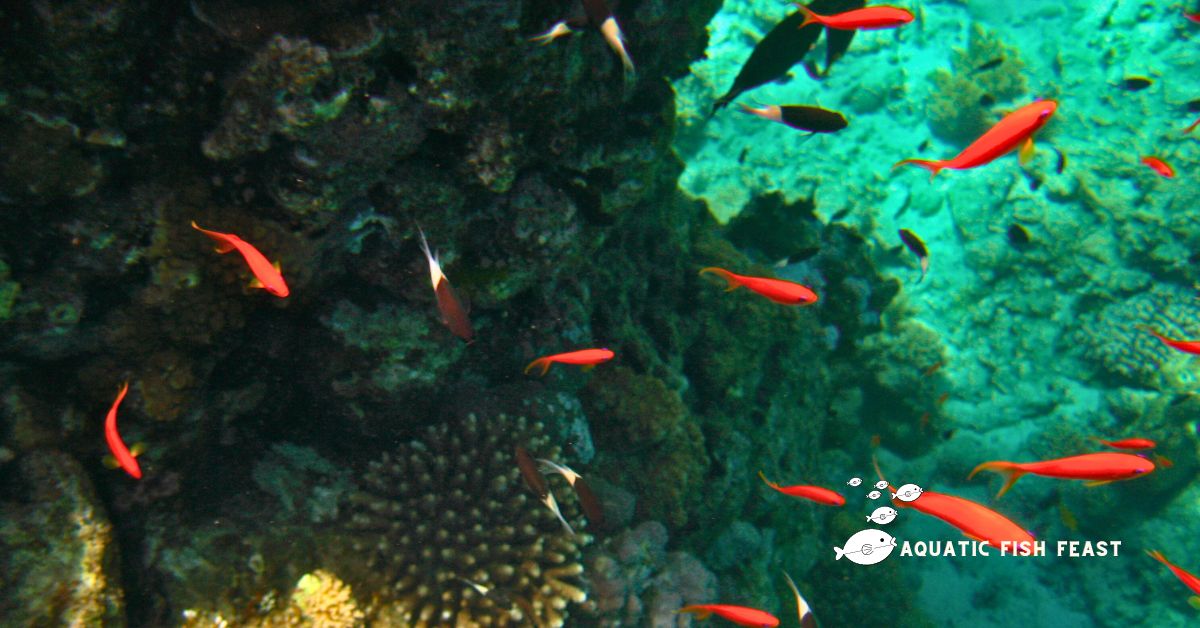Do you want to know how many Clownfish can be in a tank? I’ve seen that you can only have two unless your tank is very long.
But normally, you shouldn’t have more than two Clownfish in a tank.
Of course, there are clear times when that isn’t true.
Let us say the tank held 10,000 gallons of water. There’s room for a lot more clowns.
Long-term success with multiple pairs of clownfish or family groups of the same species (e.g., 3–4 of the same species, but only with less aggressive species) has only been seen in tanks of 180–500 gallons. But some tanks, even big ones, have broken down.
I would only put one pair in a tank this size, just like above. I don’t think it will work well with more than that in the long run.
Let’s get it started.
Table of Contents
How many Clownfish can be kept together?
The largest size for a clownfish in a 20-gallon tank is one. Adding a buddy to the tank would be possible and problem-free.
However, adding ten more gallons to a tank is typically a good idea to ensure that a clownfish companion has enough space and gets along.
It’s typically not a good idea to have more than two Clownfish in an aquarium since they are aggressive and territorial fish.
Nevertheless, this strategy might not result in death and devastation if there is sufficient space for every fish to swim around without running into one another.
There should always be two Clownfish in a tank, regardless of size.
Overintroducing fish might provoke hostile behavior from the breeding pair. Conversely, an isolated clownfish housed in captivity may grow gloomy and lethargic.
The exact number of clown fish that can live together in an aquarium will depend on several factors, including the size of the tank, the quantity of other fish in it, and the aggressiveness of the species.
Generally speaking, you should keep one Clownfish in at least twenty gallons of water. It is advised to add around ten gallons for each additional clown fish.
It’s also important to remember that, despite their peaceful image, Clownfish can turn violent in certain situations.
Can you have four Clownfish in a tank
4 clownfish may fit in a large aquarium. Clownfish tanks must be 20 gallons for one pair, 40 for two, etc.
A 40-gallon fish aquarium can hold four clownfish. As said, grouping Clownfish can be difficult.
Clownfish are territorial and aggressive. Keeping too many Clownfish in one tank is bad.
You may buy a 40-gallon tank for 2 Clownfish to add extra fish.
Shared aquariums may hold clownfish. Choose tank mates carefully for the greatest experience.
A larger tank is typically better for any fish. Clownfish also need many places to hide, rest, and feel safe and comfortable.
Can I put three Clownfish in a tank?
A 30-gallon fish tank can hold up to three Clownfish. One clownfish should fit in every 10 liters of available space.
The problem is that getting three Clownfish to get along is often rather challenging.
Clownfish live differently in tanks than they do in the wild, where they are found in small groups.
The large breeding male, the dominant female, and two or three smaller male Clownfish should ideally make up a small group of Clownfish.
In captivity, this is likely to fail.
The mating pair will likely bully the other Clownfish, making it harder for them to survive. Clownfish are best kept in couples; most experts advise against keeping them in small groups.
It could work if you simultaneously put them all in the tank as juveniles. If not, there’s little chance of success.
Can I keep two pairs of Clownfish?
Only keep Clownfish in couples aquariums; having more than one pair in the same tank can cause stress, tension, and aggression, among other issues.
Instead, if your tank is large (100 gallons or more), you may keep two or three pairs of Clownfish.
A 20-gallon fish aquarium should be big enough to accommodate two Clownfish. A solitary clownfish typically needs 10 gallons of space.
Thus, two Clownfish would fit well in a 20-gallon tank. If you want to add more fish to the tank, you must acquire something more significant.
Above this threshold of importance, there may be benefits. It won’t harm the Clownfish to give it more room.
You can also add an aquarium anemone. Which anemone you add to the aquarium determines your need for a huge fish tank.
For healthy and active fish, each tank needs room and environmental enrichment (plants and decorations).
Clownfish prefer to swim in the middle of their aquariums, so 4- and 5-foot tanks will work.
Other aspects are considered than tank size.
Clownfish need high oxygen, good filtration, and 76–82 degrees Fahrenheit water.
Finally, clownfish are reef natives and often live in saltwater tanks. To protect them, saltwater tanks must regulate pH, salinity, and other parameters.
Check the tank cycle and water quality. Tropical clownfish need warm, clear water.
Water quality should be tested routinely for ammonia, nitrites, nitrates, and pH.
Can Clownfish live alone?
When kept together, Clownfish will first become hostile. Even worse, they might never end up together.
This is why most inexperienced hobbyists only maintain one Clownfish at a time. However, according to what I’ve read on forums, Clownfish don’t become vibrant or energetic when kept by themselves.
For this reason, add another clownfish to your tank whenever you feel confident and knowledgeable.
Clownfish may live quite well on their own in an aquarium.
While they can be aggressive and possessive with other smaller fish in a shared tank, they will have more freedom to roam around and explore their aquatic surroundings by themselves or in a mated pair.
Naturally, of course! Clownfish are social animals, even if they could live alone. You can safely keep one Clownfish if your aquarium holds at least 20 gallons.
Many aquarists who do this do it without any problems. However, your Clownfish will be less animated and energetic.
Even fish get bored when they have nothing to do! So, add more decorations to your tank to give your Clownfish many play options.
Final thought
Now that we know how many Clownfish are in a tank, Clownfish are happiest with a spouse or mate. Many aquarium owners keep two Clownfish together because single Clownfish feel lonely and miserable.
After mating, both Clownfish grow powerful and fight any other clownfish that enters their domain or mistakenly crosses their path.
In nature, Clownfish reproduce in groups. It’s believed that more than two fish in a group would postpone reproducing since they’ll spend more time defining social position.
Selecting a bigger, medium, and one or more little fish from a group of youngsters may lessen this risk.
Because size correlates to social status and sexual function, choosing fish carefully may strengthen their natural hierarchies.
These fish may breed. As the dominant pair develops, they may try to eliminate all other fish. This may cause fatalities or a second split group that breeds.
How this happens varies on tank size, hosts, and personality. If cohabitation fails, have additional tanks or breeder nets to separate excess fish! Results are unpredictable.
Other Article:
Why Fishing Is So Addictive
Fishing Without Fish Finder
Difference Between Fish Farming And Fishery
Can Fish Communicate With Other Fish




